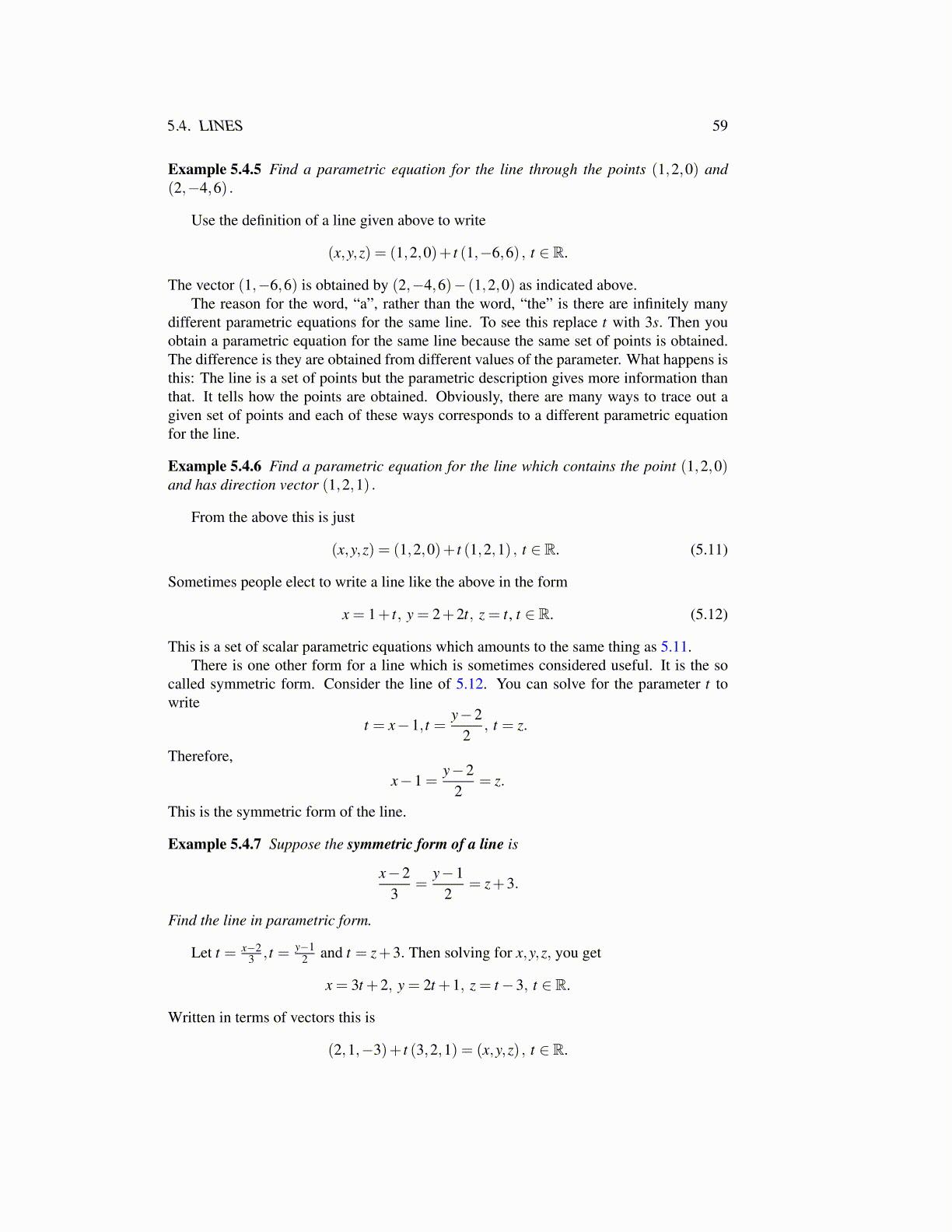
5.4. LINES 59
Example 5.4.5 Find a parametric equation for the line through the points (1,2,0) and(2,−4,6) .
Use the definition of a line given above to write
(x,y,z) = (1,2,0)+ t (1,−6,6) , t ∈ R.
The vector (1,−6,6) is obtained by (2,−4,6)− (1,2,0) as indicated above.The reason for the word, “a”, rather than the word, “the” is there are infinitely many
different parametric equations for the same line. To see this replace t with 3s. Then youobtain a parametric equation for the same line because the same set of points is obtained.The difference is they are obtained from different values of the parameter. What happens isthis: The line is a set of points but the parametric description gives more information thanthat. It tells how the points are obtained. Obviously, there are many ways to trace out agiven set of points and each of these ways corresponds to a different parametric equationfor the line.
Example 5.4.6 Find a parametric equation for the line which contains the point (1,2,0)and has direction vector (1,2,1) .
From the above this is just
(x,y,z) = (1,2,0)+ t (1,2,1) , t ∈ R. (5.11)
Sometimes people elect to write a line like the above in the form
x = 1+ t, y = 2+2t, z = t, t ∈ R. (5.12)
This is a set of scalar parametric equations which amounts to the same thing as 5.11.There is one other form for a line which is sometimes considered useful. It is the so
called symmetric form. Consider the line of 5.12. You can solve for the parameter t towrite
t = x−1, t =y−2
2, t = z.
Therefore,
x−1 =y−2
2= z.
This is the symmetric form of the line.
Example 5.4.7 Suppose the symmetric form of a line is
x−23
=y−1
2= z+3.
Find the line in parametric form.
Let t = x−23 , t = y−1
2 and t = z+3. Then solving for x,y,z, you get
x = 3t +2, y = 2t +1, z = t−3, t ∈ R.
Written in terms of vectors this is
(2,1,−3)+ t (3,2,1) = (x,y,z) , t ∈ R.